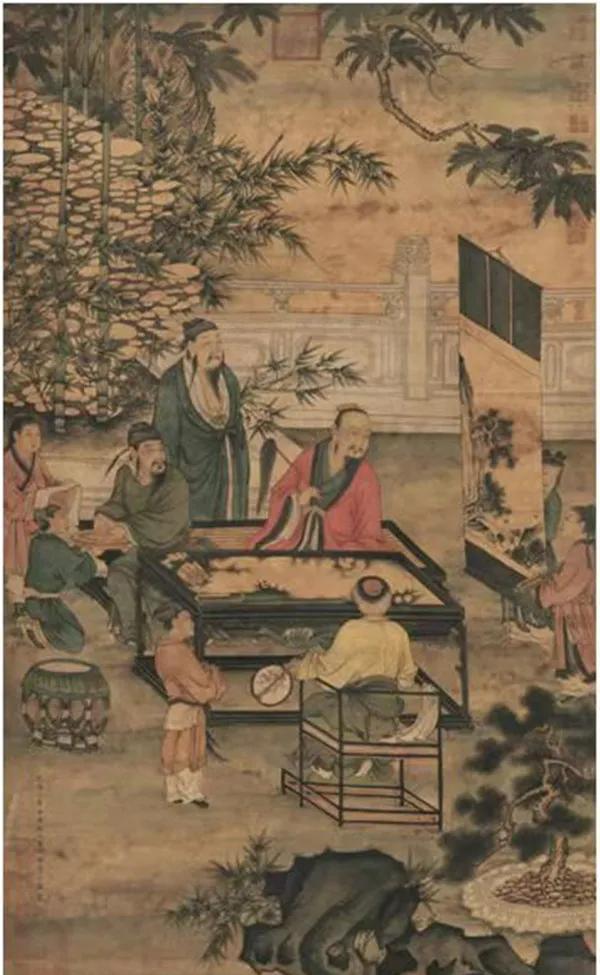
A special scene will be held in the fourth edition of the Expo, where 10 ancient Chinese paintings and calligraphy carefully selected by the Kyoyo Golf Resort Co., Ltd. in Hokkaido, Japan, will be successfully eye-catching as soon as they appear.
"Parrot Diagram" signed by Xu Xi
The first of its most representative paintings is a work signed by Xu Xi. Xu Xi, who is it? If you open Baidu Encyclopedia, you can find his introduction: Xu Xi, an outstanding painter of the Southern Tang Dynasty of the Fifth Dynasty, a native of Jinling (present-day Nanjing), and a native of Zhongling (present-day Jinxian, Jiangxi). Born in the "Jiangnan Famous Clan". He was born during the reign of Emperor Guangqi of tang, and later returned to Song with Li Hou in the last year of Kaibao (975 AD), and died of illness shortly after. During his lifetime, Guo Ruoxu called him "Jiangnan Virgin". Shen Kuo said he was "Jiangnan Cloth". Its temperament is bold and open-minded, his ambition is high, he is good at painting flowers and bamboo trees, cicadas and butterflies, grass and insects, and his magic is no different from nature.
Some critics believe that The Southern Tang Dynasty Xu Xi originally created the Gongbi Boneless Painting Method. Shen Kuo of the Song Dynasty described his paintings as "made of ink brushes, special grass, and a little Dan powder, and the spirit is very strong, and it has a vivid meaning.". Unlike "The Huang family is rich and noble", it is more "wild".
Signed by Zhao Tuo of the Song Dynasty
The second most representative work is the work of Zhao Tuo in the Song Dynasty. Zhao Tuo is the song huizong that everyone is familiar with, the eighth emperor of the Song Dynasty. The emperor's artistic achievements far exceeded that of politics. On the basis of learning Huang Tingjian and Chu Suiliang, his calligraphy has created a unique "thin gold body", which is thin and crisp, with flankings like orchid bamboo, and the brushwork is very strong and flowing, unique.
He reached a certain artistic height in all aspects of poetry, calligraphy and painting. Paintings, especially works of flowers and birds, are rich in craftsmanship, allegory, arbitrary, pen-driven, and god-like. In his book Chinese Art and Chinese Architecture, Lawrence once said that Zhao's painting realism technique gave people extraordinary allure with "magical realism."
It can be said that Emperor Huizong Zhao Tuo was the only emperor in history who truly possessed high artistic attainment and painting talent, and truly deserved to be called a painter.
Signed by Fu Shan of the Qing Dynasty
Together with Gu Yanwu, Huang Zongxi, Wang Fuzhi, Li Yong, and Yan Yuan, Fu Qing was called the "Sixth Master of the Early Qing Dynasty" by Liang Qichao.
Fu Shan learned everything, in addition to history, he was also familiar with the pre-Qin sons, and he was also good at calligraphy and painting medicine. Li Zhimin, a professor at Peking University and the pioneer of introducing the monument into the grass, commented: "Fu Shan's cursive circles are many eyes, complex but not chaotic, and in the midst of depression, there is also the state of Yiyan." He was also a well-known Taoist scholar, with a wide range of knowledge in philosophy, medicine, Neidan, Confucianism, Buddhism, poetry, calligraphy, painting, golden stones, martial arts, and examinations. He is considered a model figure for maintaining national integrity in the late Ming and early Qing dynasties.